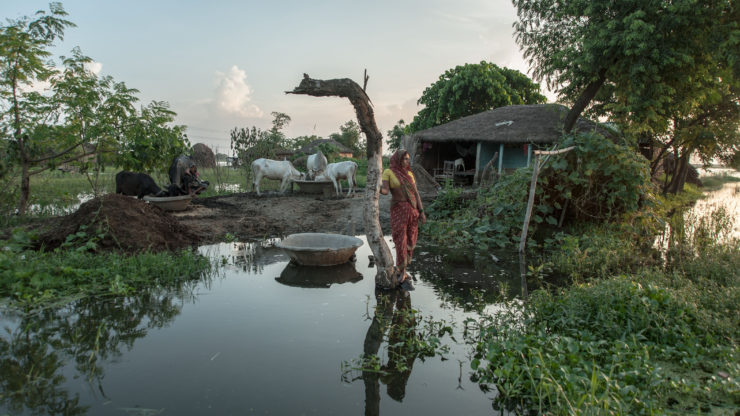Saud Ur Rehman had been standing in line at the bank for eight hours before he called his wife and cousin, complaining of chest pains. It was the third consecutive day that Rehman, owner of a computer repair shop, had arrived at the Bank of India branch in central Delhi well before dawn, hoping to exchange his 500 and 1,000-rupee bills, rendered useless just eight days before, when India’s prime minister Narendra Modi announced demonetization of the two notes.
Rehman waited hours each day, only to be turned away after the bank ran out of cash or the counters closed before he made it to the front of the line. On the third day, the 48-year-old left the bank empty-handed once again and rushed himself to the hospital after reportedly suffering a heart attack. He later died, with doctors speculating that the strain of standing in line, coupled with a lack of rest and food, brought on the attack.
On November 8, 2016, the Indian government announced that currency notes of 500 rupees (about $7.50) and 1,000 rupees (about $15) would cease to be legal tender. It was part of an effort, Modi said, to curb corruption and encourage Indians to start using formal credit systems. The bills accounted for over 85 percent of the banknotes in circulation—in a country where 90 percent of all business transactions are cash and upwards of 230 million people, 18 percent of the population, are unbanked, according a 2015 PricewaterhouseCoopers India report.
Related Reading
Implemented with no warning, demonetization left many Indians in a panic. For days, people stood in lines snaking for blocks outside banks and ATMs. Severe cash shortages brought much of the economy to a halt. Many unbanked vendors, small businesses, and farmers were unable to buy provisions, causing shortages of food and basic goods, and service providers—from taxi and rickshaw drivers to barbers and doctors—were forced to refuse services. Dozens of people like Rehman died, whether from collapsing while waiting in long lines or because hospitals refused to help patients trying to pay with old bank notes.
The national Indian media, with a few exceptions, examined how the country’s billionaire club had shrunk, the toll demonetization took on the real estate market, and what urban professionals should invest in now. Few turned their lens on those who, in some ways, demonetization hurt the most: rural Indians.
India is a nation of 1.3 billion people, two-thirds of whom live in rural areas, a mosaic of ethnic and religious minorities dispersed across 29 states
That’s where the People’s Archive of Rural India (PARI) came in. It was PARI that chronicled the plight of small farmers and traders, laborers and poor migrants, domestic help and other impoverished groups in the wake of the demonetization announcement. PARI told the stories of people like Varda Balayya, a 42-year-old farmer from Telangana who—seeing no other way to escape his financial woes after demonetization quashed his plans to sell some of his land to pay off debts—mixed pesticide in a meal of chicken curry, fatally poisoning himself and his father.
On the same day India introduced demonetization, America chose Donald Trump as its next president, an outcome the mainstream media and major pollsters completely missed. One reason the election result came as a surprise: the disconnect between those living in the rural communities and those living in cities. “Urban folk need to better understand those communities,” says Robert Jensen, journalism professor at University of Texas at Austin, who has long used “Everybody Loves a Good Drought” by Palagummi Sainath, PARI’s founder, to teach his classes about reporting from India’s poorest districts. “And people living in rural areas also need to better understand the forces that are undermining their ability to live decent lives.”
PARI may provide one model for doing just that. “I know nothing of its kind,” says Arlie Hochschild, author of “Strangers In Their Own Land: Anger and Mourning on the American Right.” “PARI could provide a model to be adopted around the world.”
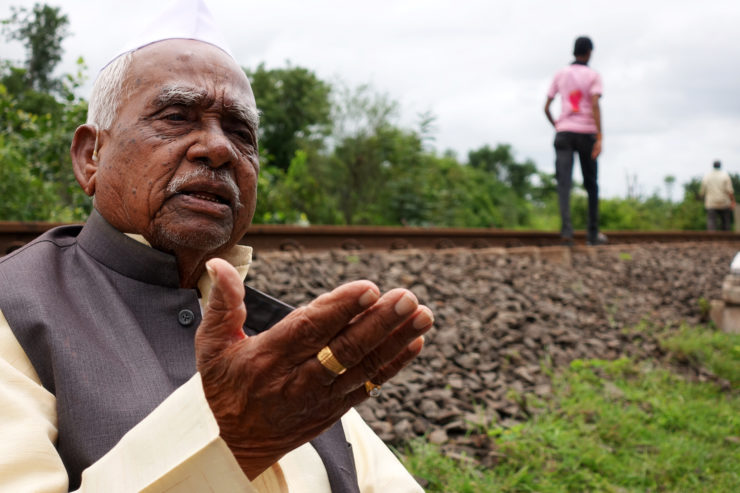
India is a nation of 1.3 billion people, two-thirds of whom—some 833 million—live in rural areas, a mosaic of ethnic and religious minorities dispersed across 29 states. The country is home to more than 780 languages (though only 22 are officially recognized) and many more dialects, with some spoken by millions and others by just a few. Sainath founded PARI in 2014 to document the everyday lives of everyday people in rural India.
“Worldwide, there is a retreat from the rural in the economy and an almost eclipse of the rural in the media,” says Sainath, the former rural affairs editor at The Hindu, a 139-year-old English-language daily. “We have full-time fashion correspondents, design correspondents, glamor correspondents, you name it, but we don’t have a full-time poverty correspondent, not one. There’s no on full-time on the beat of rural poverty, full-time on the beat of agriculture, full-time on the beat of employment. There is one newspaper in Kolkata which had the privilege of appointing the first full-time golf correspondent. The statistical negligibility of golf in the Indian population is beyond my mathematical ability to compute.”
With PARI, Sainath seeks to bridge the urban-rural divide
Sainath began his journalism career in 1980 after graduating with an M.A. in history from Jawaharlal Nehru University in New Delhi. Despite being from one of India’s largest cities, Chennai (formerly Madras), in southern India, Sainath built his career on a commitment to reporting on rural Indians. In the early 1990s, Sainath covered some 62,000 miles, including many on foot, to report on the increasing distress of farmers devastated by droughts, floods, and misguided governmental policies. That work led to his 1996 book, “Everybody Loves a Good Drought: Stories from India’s Poorest Districts,” now used as a teaching tool in over 100 universities in India and abroad.
With PARI, Sainath seeks to bridge the urban-rural divide. (Disclosure: I am a founding trustee of CounterMedia Trust, the nonprofit that owns PARI.) “In the archival sense, we’ve been called ‘a Smithsonian from below,’” says Sainath, because of the focus on documenting traditional ways of life, some already vanished. “Here it is not ‘white man queries native.’ We shift focus from celebrity-led or marketing-driven journalism, from the lives of the elite, to the lives and labor of ordinary people and communities. We understand journalism as having a social role. We are independent, not neutral.”
PARI does not accept donations from governments or corporations, so to keep the site going Sainath and a core group of donors regularly contribute funds in addition to money donated by users of the site. Eight journalists are paid a monthly stipend to work full-time out of a small office near Mumbai. This team is supplemented by a network of about 125 photographers and 90 writers across India, 10 full-time fellows, and nearly 1,500 citizen-journalist volunteers. Samyukta Shastri, a young college graduate, reports, photographs, and helps out with administrative work because she wants to believe that “utopia is possible.”
The PARI site is structured by categories. Things We Do is about the vast world of rural Indian labor—farmers, woodcutters, blacksmiths, and people like Karukavel Nadar, who climbs nearly 5,000 feet throughout the course of his day, scaling trees to tap them for sap to make palm molasses and fermented palm wine. Things We Make is about rural arts, crafts, skills, and traditions, such as schools of sculpture and weaving, many of which are dying out.
One recent PARI project, Foot-Soldiers of Freedom, sought to preserve the history of India’s freedom fighters, rural Indians—most of them now well into their 80s and 90s—who fought for independence from British rule. Two people whose stories are chronicled are Demathi Dei Sabar, a member of the Sabar tribe who, as a teenager in 1930, attacked a British officer with a stick after he shot her father during a raid on their village, and Ramachandra Shripati Lad, known as Captain Bhau (‘Elder Brother’), a founding member of the armed wing of the prati sarkar, revolutionaries who, from 1943 to 1946, formed an underground government separate from the Raj in the state of Maharashtra.
“The whole history of the prati sarkar was dead until PARI revived it,” Deepak Lad, grandson of R.S. Lad, says his grandfather, now 95, told him. “That great chapter in our history was erased. We had fought for independence, then the years passed by and our contribution was forgotten. [PARI] restored us to the consciousness of our society.”
Another unique PARI effort focuses on unsung women. The Grindmill Songs Project is a collection of thousands of songs from the women in Maharashtra’s villages, sung over generations during household chores, especially while at the grindmill, which is used to make flour from grain. The songs offer insights into women’s daily lives, but also into village life and culture, religion and mythology, and social and political issues, including involving gender, class, and caste.
This chronicling of Indian diversity has taken on a new urgency, since many urban Indians are unaware of how diverse their country actually is
In one song, a woman sings of Brahmin women, the highest of the four Hindu castes, having to do the menial chores typically performed by Dalits, the lowest caste. The database has 110,000-plus song texts, nearly 40,000 of which have been translated into English and/or French. Close to 30,000 have been digitally recorded.
“One of our mandates is to bring the lives of rural Indians in their voices and words,” says PARI's managing editor, Namita Waikar, who is overseeing the project. “That is exactly what these women are expressing: their stories handed down through generations.”
The Faces project is an effort to capture the facial diversity of ordinary Indians. The goal: photograph at least three people—one adult male, one adult female, and a child/adolescent—from each of India’s 10,000-plus blocks (a block is the most basic administrative unit) across 640 districts. So far, images of more than 600 faces, taken by some 125 photographers, have been posted online. “We’d started looking at the faces of ordinary Indians early into PARI’s existence, because their faces never appear in the media and therefore in public consciousness,” says Sainath. “That space is reserved for the elite—the privileged, film-stars, celebrities and the like.”
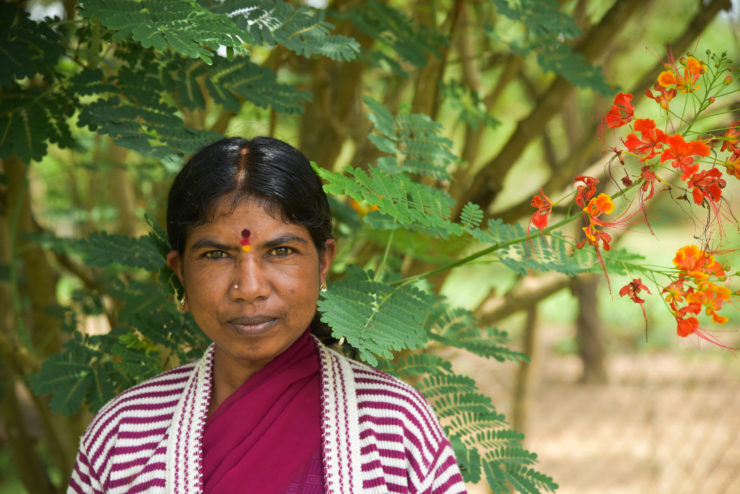

This chronicling of Indian diversity has taken on a new urgency, since many urban Indians are unaware of how diverse their country actually is. As thousands of young people from regions like the northeast of India move to places like Delhi, Bangalore, and other large cities, attacks on them—beatings, molestations, rapes, and even murders—have been on the rise. The attacks on students from the northeast begin with taunting them over their Chinese features. Then this escalates into physical violence sometimes. And in some cases, death.
Among the most prominent recent cases was that of Nido Tania, a 20-year-old student from Arunachal Pradesh, who was murdered because of his East Asian features by a shopkeeper and his friends in a Delhi market in 2014. Racially-motivated violence “has risen a lot in a period when there is a great deal of consciously promoted stereotypes of what is Indian or who is an Indian” explains Sainath. “Faces shows us there’s no one face that is ‘typically Indian.’”
PARI staffers empower people to tell their own stories, without a journalist as intermediary
Anyone with a camera is encouraged to participate and take photographs—with the subject’s informed consent. Along with a photo, participating amateur photographers are asked to upload various details about the photograph’s subject: their name, occupation (or parents’ occupation), age, where the photo was taken, and a short quote. Along the way, PARI is building a list of little-known occupations—like snake catcher or face reader—offering further insight into the daily lives of rural Indians.
“What’s going on in India is a giant de-skilling of the countryside,” Sainath says. “We’re taking these people and telling them to drive auto rickshaws. The occupational diversity, linguistic diversity, you name it, it’s there. None of this is ever reflected in your media. Millions of genres of songs and music are disappearing. That was the idea of the People’s Archive of Rural India. How do we start capturing at least fragments in our lifetime?”
Many photographers, often students from upper caste backgrounds, are engaging with Indians they otherwise would never encounter. Nine students of the Visva-Bharati University in Santiniketan spent their holidays this past May and June shooting faces for PARI in the states of West Bengal and Himachal Pradesh. “The image I had of rural folk and what I have now is completely different because I learned about their lives—illiteracy, child marriage, especially among girls, nutrition issues,” says Arnab Kumar Sen, a 23-year-old master’s student in mass communication, who contributed photos of faces from the Hooghly district of West Bengal.
PARI staffers empower people to tell their own stories, without a journalist as intermediary. Jayamma Belliah, an indigenous woman from a village in the Chamarajanagar district, in the southwest state of Karnataka, had never used a camera before Jared Marguiles gave her a lesson in photography. Marguiles, with support from the 2015-2016 Fulbright Nehru Student Research Grant, and the University of Maryland, helped Belliah take photographs of her daily life over the course of six months.
Living on the fringes of the forested Bandipur National Park, a tiger reserve, she produced a photo essay that sheds light not just on relationships between humans and wildlife, but on the unique socio-economic realities—such as prescriptive approaches to wildlife conservation—faced by rural poor living on a wildlife reservation. Among other images, Belliah shot pictures of her two nieces, who, if they hope to continue their education, will have to live in a distant hostel during the week since there is no high school nearby, and the treehouses where, during harvest season, groundnut farmers spend each night, guarding their fields against elephants and wild boars.
Purna Das was a largely unknown poet and fisherman before a PARI story on him, “The Poet-Singer of Dhinkia,” a recording of Das singing a protest song he composed, made him something of a legend among very poor communities, including several illiterate peoples in the Jagatsinghpur district of Odisha state. The song rails against South Korean steelmaker POSCO, which had leased from the government a 2,700-acre plot in the area to build a $12 billion steel plant—something farmers and others vehemently opposed due to the harm the project could do to the environment and the land it would take out of agricultural use. The song—whose lyrics include “why are you looting our land by giving false promises of jobs,” “POSCO will destroy the shelters of the people and the paddy”—became an anthem of the protest movement. In March, POSCO scrapped its plans, in part due to protests and in part due to regulatory hurdles.
Indian news anchor and consulting editor at the India Today group Rajdeep Sardesai says PARI serves as a “reminder” to the mainstream press: “I view PARI as a daily wake-up call. In terms of challenges, for niche sites, including PARI, is how to dovetail your concerns to a wider audience.”
“The idea is to take journalism and put it back in the hands of communities. People telling their own lives, documenting their own lives.”
— P. Sainath, founder of PARI
Though PARI’s readership is still mostly made up of journalists, academics and activists, the site is beginning to extend its reach by sharing its content with around 30 district newspapers in the state of Karnataka and several popular Indian news sites, including Scroll and The Wire. Other sites modeled on PARI are starting to appear, too. PARI has inspired the Janaavishkaara People's Participatory Portal in the state of Kerala, and outside India a South African people’s archive of township jazz and a people’s archive in Nova Scotia are in the works.
Inspired by PARI's idea, the Antigonish County Adult Learning Association in Nova Scotia has been engaging adult learners in developing media projects for educational and community development purposes. “A website is slowly being developed where we also build a collection of stories of rural living in Nova Scotia, where depopulation from rural areas is an ongoing serious concern,” says Carole Roy, professor at St. Francis Xavier University.
“We are going far beyond making [tribal peoples] and Dalits the subjects of the stories,” Sainath explains. “Now we are making them the authors. The idea is to take journalism and put it back in the hands of communities. People telling their own lives, documenting their own lives.”
Capturing India's Diversity
With the Faces project, PARI aims to photograph Indians from all 640 districts
 | 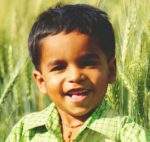 |  |
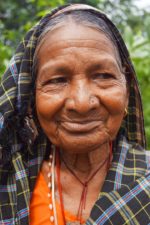 | 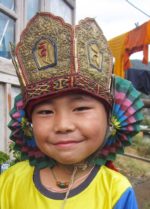 | 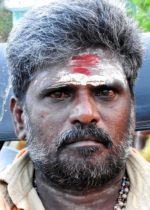 |
Top row (photo credits in parentheses): Mohini Devi, farmer, Matela, Uttarakhand (Arpita Chakrabarty); Sachinbhai, student, Kalej, Gajarat (Gurpreet Singh); Ohame, hunter-gatherer, Jarawa Tribal Reserve, Andaman and Nicobar Islands (Madhusree Mkerjee)
Bottom row: Raibari Majhi, farmer, Koyba Chhattisgarh (Purusottam Thakur); S.K. Karma, Rupa, Arcunachal Pradesh (Anjora Noronha); Kottavarayan Rajendran, auto rickshaw owner/driver, Kanchipuram town, Tamil Nadu (Namita Waikar)
